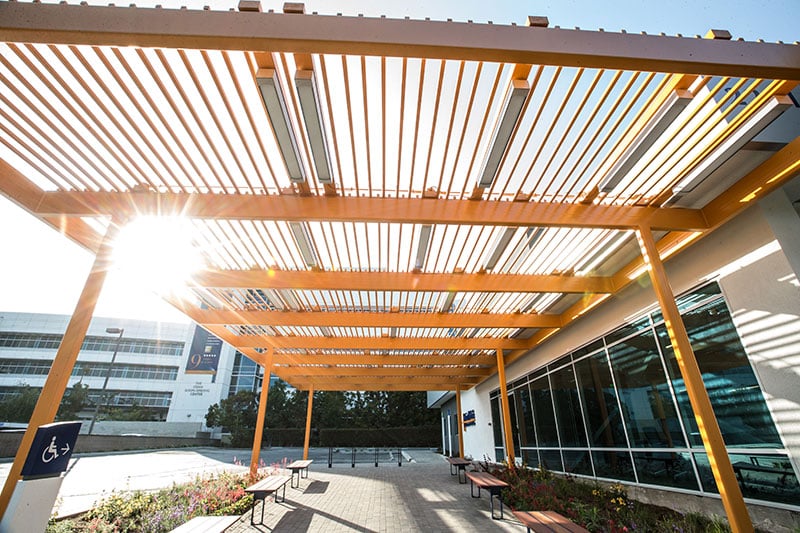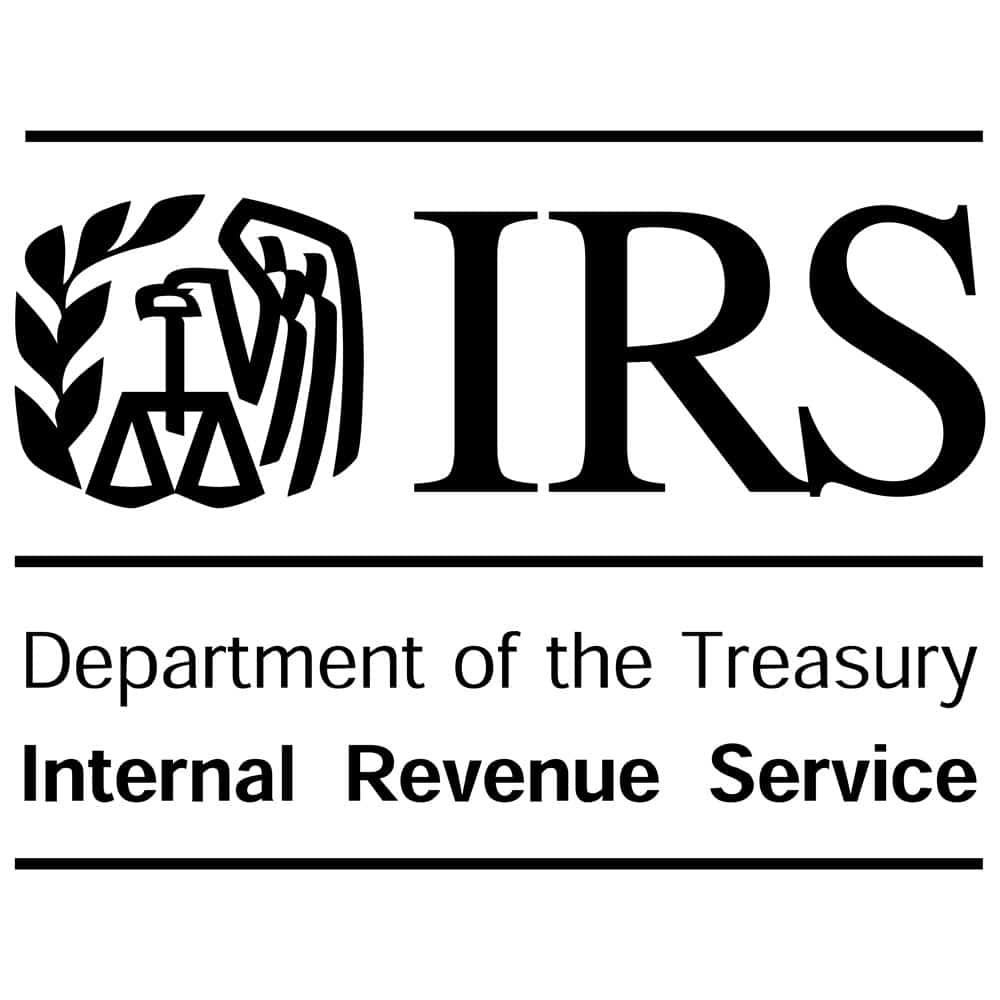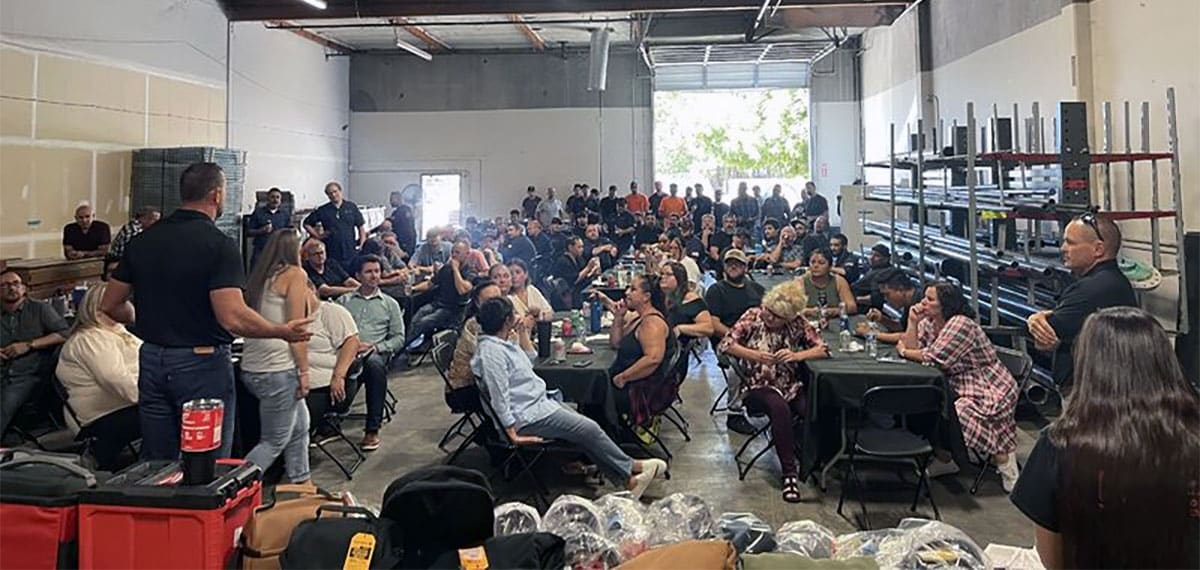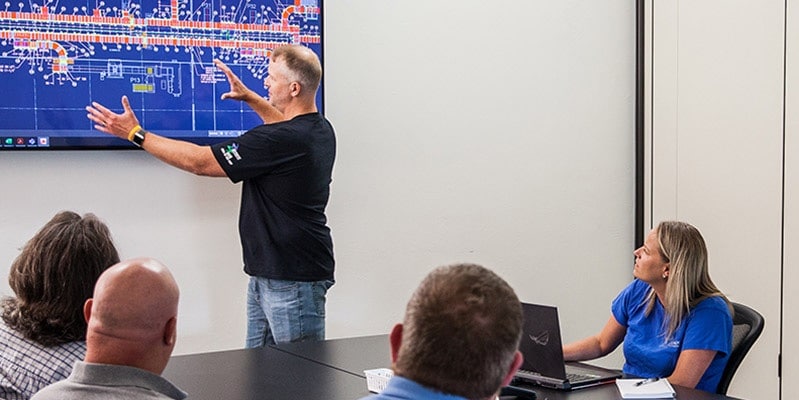Many businesses like to say that their most valuable resource is their people. WestLand Resources, Inc.’s (WestLand) Engineering & Environmental Services puts that belief into action.
The Menke Group is proud to have assisted WestLand with their successful transition to 100% employee ownership through the creation of an Employee Stock Ownership Plan (ESOP) at the end of January, 2021.
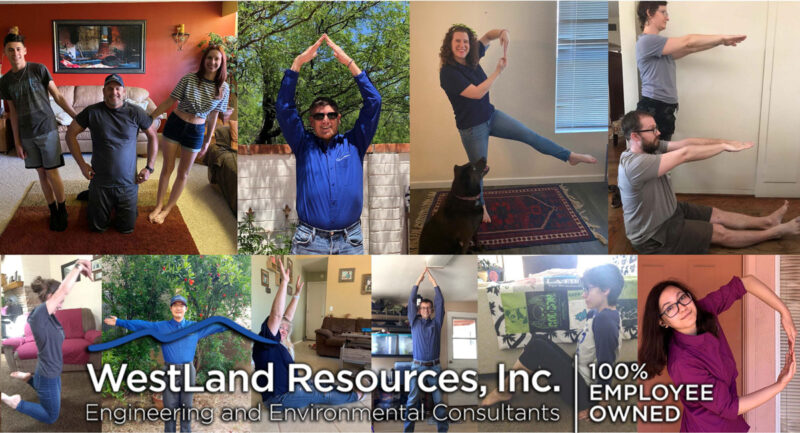
Today, WestLand’s team includes a diverse range of engineers, scientists, archaeologists, environmental planners, biologists, permitting specialists, landscape architects, and business experts working together to provide to a broad range of clients.
From their decision to become employee-owned to the very structure of their ESOP transaction, WestLand has always put their people first. The transaction was partially funded by a 401(k) lateral transfer, a rarely used mechanism that enables employees to participate in the ESOP’s stock purchase using funds they had already invested in their 401(k) accounts. This was not only beneficial from an initial financing perspective, but it can also create great opportunities for WestLand and WestLand’s employees in the future.
History
Tucson-based WestLand Resources was founded by Jim Tress, Mark Taylor, and Peter Livingston in 1997. WestLand has grown from the three original founders to over 165 employees with offices in Oregon, Washington, Tucson, Phoenix, and Flagstaff.
Today, WestLand’s team includes a diverse range of engineers, scientists, archaeologists, environmental planners, biologists, permitting specialists, landscape architects, and business experts working together to provide to a broad range of clients. Their consulting services span many sectors of the economy including mining and industrial, urban and community development, power and energy, tribal nations, and federal, state, and local governments.
In the years preceding their ESOP, WestLand’s ownership team looked to an internal buyout to facilitate the transition of the company to the next generation of owners. This was being done gradually through stock bonuses and small stock purchases, one employee at a time. It quickly became apparent that that internal buyout option would be much more difficult to achieve compared to an outside sale.
“As an S-Corp, we had started bringing some employees into the ownership fold,” Tress explained. “We got up to 21 shareholders. But even at a favorable stock purchase price, it was a lot of money for people to come up with individually. It became really apparent to Mark and I that it was going to be a very long road to make that transition method work.”
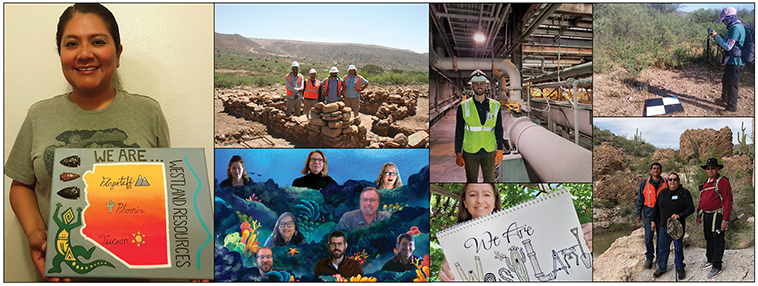
“Right from the start, it was clear that Jim Tress saw the WestLand team as a family. He wanted everyone to share in the wealth,” Coltman said.
An ESOP in the making
Many of the Menke Group’s clients are new to the world of ESOPs, but WestLand’s team was virtually surrounded by them. After Jim Tress left his old firm to start WestLand, they implemented a successful ESOP. As WestLand continued to grow, several of the leadership’s team’s new members came from an ESOP company and were very familiar with the features and benefits of an ESOP.
“I was at a New Year’s party at the end of 2019, and my wife’s cousin even said, ‘Hey, I just sold my company to an ESOP,’” Tress recalled. The idea was inescapable. But it was also a perfect fit.
Tim Connolly, WestLand EVP, was one of the early advocates for selling to an ESOP. At the time, he was serving on the advisory board WestLand had set up as part of their preparations to change from a small, entrepreneurial company to a mid-sized, multigenerational firm. He, as well as several others in the firm, recognized that an ESOP would be an ideal way to give the current owners a comfortable exit strategy and to ensure WestLand would continue after they stepped down. The leadership team also saw it as a key discriminator in the market as the firm pursued its strategic vision for the company.
ESOPs in the COVID era
Menke CEO Kyle Coltman flew to Tucson, WestLand’s headquarters, for what would turn out to be one of his final in-person site visits before the COVID-19 pandemic struck. He met with WestLand’s leadership and presented them with an outline of how an ESOP might work for their business.
“Right from the start, it was clear that Jim Tress saw the WestLand team as a family. He wanted everyone to share in the wealth,” Coltman said. “No one would hold anything back. If they did this, when the ESOP deal was complete, WestLand would be 100% employee-owned.”
Shortly after Coltman’s meeting with WestLand, the pandemic prompted shutdowns that reshaped the face of business across the country. WestLand was deemed an essential business, so they did not have to stop operations entirely, but many of the projects on which they were consulting suddenly fell through. For the field work that continued, even the basic logistics had to change, such as everyone needing to travel in separate vehicles and workers no longer being able to stay in overnight lodging near their work sites.
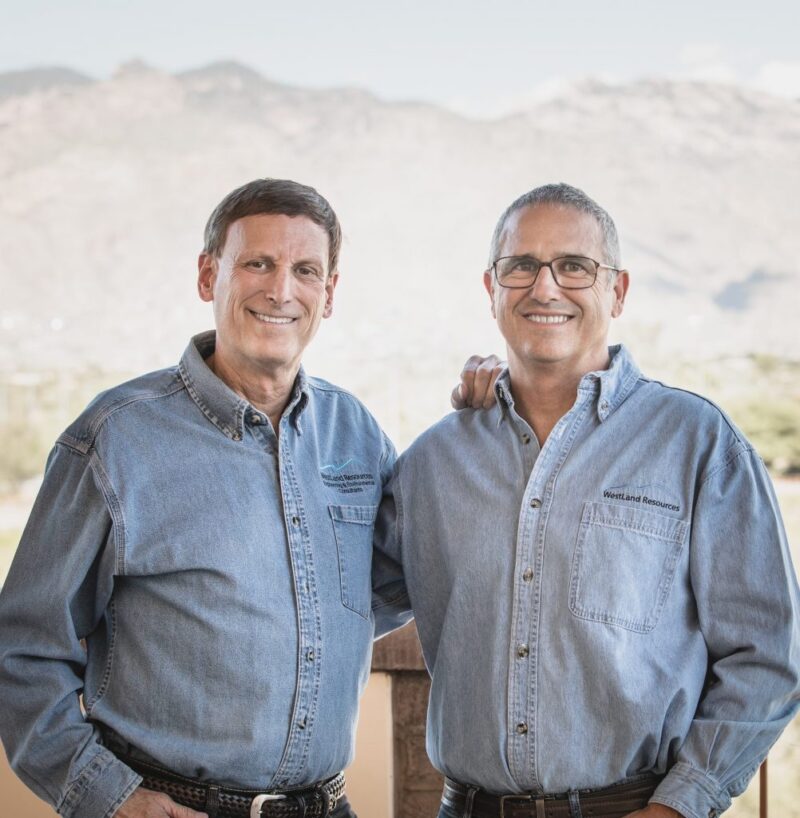
Tucson-based WestLand Resources was founded by Jim Tress, Mark Taylor, and Peter Livingston in 1997. WestLand has grown from the three original founders to over 165 employees with offices in Oregon, Washington, Tucson, Phoenix, and Flagstaff.
WestLand’s employees rose to the challenge. “We had a couple million dollars’ worth of field work go away,” Tress recalled. “WestLand’s dedicated staff rallied and replaced the lost work. Their efforts have not gone unnoticed as it has resulted in additional work for the firm.”
As they adapted to the evolving situation, they never lost sight of their long-term goals.
“Early on we said, we are going to focus on getting through this, but we are not going to take our eye off our strategic plan and our vision for Westland. We are going to move forward,” said Tress. “WestLand is thankful for our dedicated staff as well as our amazing clients. Without their dedication to keep moving projects forward, we would not be where we are today.”
By April 2020, when many businesses were still dealing with the worst of the pandemic’s challenges, WestLand reached out to Menke to say that they were in a strong position for the rest of the year—it was time to put their ESOP transaction in motion.
In a year-long process, Tim Connolly worked closely with Kyle Coltman and Menke Group President John Menke to structure the ESOP transaction in a way that would accelerate what the company had already been doing by bonusing stock to employees and allowing them to directly invest.
“John and Kyle were a pleasure to deal with,” Connolly said. “They’ve clearly got a strong team behind them.”
After reviewing the success of WestLand’s historical internal stock transfers and culture of direct investment, it was clear that the key to accomplishing WestLand’s transition goal was a lateral transfer.
What is a lateral transfer?
In a lateral transfer, employees get the opportunity to move funds they have already accrued in their 401(k) accounts to an ESOP and use them as part of an ESOP stock purchase transaction. Participants receive the purchased stock in their ESOP accounts right away, rather than having to wait for shares to be allocated over time.
This is distinct from a KSOP, a hybrid retirement plan wherein a company matches employees’ contributions to their 401(k) with company stock, rather than cash.
A lateral transfer provides several benefits:
- Creates an internal funding source, reducing the amount of debt the company must take on to finance the purchase.
- Builds interest in the ESOP among the employees, and engagement with the concept of employee ownership.
- ESOPs tend to grow in value faster than 401(k)s, so employees who transfer their funds may see a higher rate of return.
- Because employees can purchase company stock with money they have already invested in their retirement, the option is available to employees who may not be able to afford it out of other savings.
“It’s a great opportunity for employees who want to take advantage of this chance to buy stock, but who don’t necessarily have the cash on hand,” Coltman explained. “They might say, ‘I don’t want to pull out my checkbook, but if I can do it just by moving some funds over from my 401(k) to the ESOP? I’m in.”
Despite the benefits, and the fact that most companies that implement ESOPs have 401(k) plans, lateral transfers are used in less than one percent of ESOP transactions. In part, this is simply because they are not well known, even among ESOP specialists.
A larger reason for their rarity may be that they add an additional layer of complexity to what can already be a complex transaction. Lateral transfers require substantial documentation and due diligence, including ensuring that the offering is not discriminatory in any way.
Lateral transfers also require additional employee communication and education. These are key components of any healthy ESOP but can typically wait until the transaction is nearly or entirely finalized. Lateral transfers require educating employees beforehand. You cannot ask employees to invest their retirement savings in something they do not understand. They have to be informed about the changes to the company and the workings of their impending ESOP with enough time to consider the offering, weigh any perceived risks (while ESOP companies have been proven to grow faster than other firms, there is still an element of risk in moving retirement savings from a diversified 401(k) portfolio to a single company’s stock), and reach a decision about whether to buy in.
Many companies are reluctant to take on the additional complexities of a lateral transfer. Many ESOP advisors feel the same way. WestLand was up to the challenge—in fact, they embraced it—and the Menke Group was there to help them every step of the way.
The transaction begins
Mid-2020, WestLand’s leadership and shareholders met to discuss the framework of the ESOP. In December, they began hosting meetings with eligible employees to talk about the impending transaction and the lateral transfer opportunity.
“We always keep a strong cash reserve to allow us the flexibility to make long-term decisions,” Tress said. “So, taking on debt was new for the shareholders and employees alike. They asked a lot of great questions.”
“We had to explain that the purchase price would be based on the pre-debt valuation,” Connolly added. “Immediately after the transaction, when the company took on all this debt, the value was going to drop. Potential buyers had to be willing to look at this as a long-term investment.”
Working with the Menke team, WestLand designed the lateral transfer to give employees as much of a safety net as possible, including price protection. The hard work paid off. Just over a quarter of WestLand’s staff ultimately chose to participate in the lateral transfer, exceeding all expectations. Together their transfers represented approximately a third of the total purchase price for the sellers’ stock.
Those participants included 19 out of the 21 selling shareholders (one seller who declined to participate has plans to retire later this year; the other was a new employee with no 401k balance). They sold their shares to the ESOP, then immediately bought back in—an impressive display of solidarity with their now-fellow employee-owners.
The leadership anticipated that most of the existing shareholders would participate in the transfer but were pleased to see a higher level of participation than expected from first-time shareholders across the organization, as well.
“It was really gratifying to see the diversity of participation and the level of commitment to WestLand across the board,” said Tress.
“In a traditional ESOP, employees get to have skin in the game without actually having skin in the game. The company pays for everything,” said Senior Vice President and Principal David Cerasale, one of the employees who sold his stock to the ESOP, and then bought a new ownership stake through the lateral transfer. “The individuals who took part in the lateral transfer put their own skin in the game. I’m very impressed by that.”
The company took out a bank loan that, when coupled with the lateral transfer funding, allowed for the purchase of approximately two-thirds of the sellers’ stock in a direct sale. The remaining shares were retired through a stock redemption in exchange for a promissory note and detachable warrants.
Seller warrants explained
While far more common than a lateral transfer, seller warrants are still relatively rare. Like a stock option, warrants give a seller the right to buy a certain number of shares of the company at a later date—typically after all of the ESOP’s debt has been repaid—and, like private company stock options, warrants are typically settled in cash by netting the then-current share price against the “strike price.” The National Center for Employee Ownership estimates that warrants are used in roughly 27% of ESOP transactions that have seller financing.
With warrants, sellers get a market rate of return on their promissory note without impacting the company’s cashflow. Between the return provided by warrants and the ability for a seller to defer taxes on the proceeds from their sale by rolling over the funds into another investment vehicle through a 1042 exchange, the value difference between selling to an ESOP and selling to a strategic buyer can be reduced or eliminated entirely.
Warrants are a particularly good option for owners who intend to stay with the company for at least a few years after the initial sale. They can continue to help the company grow and then reap the benefit—and that benefit can be substantial. Zweig Group recently found that architecture, engineering, and construction firms with ESOPs have a 35% higher median value per employee compared to their traditionally-owned competitors.
“The employees want to grow the company because it’s good for their ESOP value,” Coltman explained. “And the owners who just sold their stock want to keep growing the company in value because they will be able to get a better return on their warrants. Everybody is motivated to keep growing. Everybody’s thinking like an owner.”
Values rooted in history
WestLand’s ESOP is a vehicle that will carry the company’s core values into the future. But those values are rooted in the very origins of modern business.
“Business is still a contact sport,” said Tress. “But back in the 12th century, the consequences were a little more severe. Your competitors tried to steal your wares, and probably kill you while they were at it. Merchants started banding together to travel for their mutual protection – they became companios, Latin for bread-sharers. That’s what we are, a group of people who have banded together to achieve our vision for WestLand.”
ESOPs embody that historical definition of a company, turning a business into a truly shared enterprise where every employee stands to benefit from the company’s success.
WestLand’s appreciation for that history is written into the company’s DNA. Whether by subconscious design or by serendipity, when the company rewrote their values governing employee actions, they formed the acronym BREAD:
Believe in People
Respect, Engage, Inspire
Excellence Always
Anticipate, Adapt, Achieve
Do the Right Thing
Each of those values is apparent in the way WestLand Resources does business, but they can also be found at the heart of any successful ESOP.
- ESOPs inherently involve entrusting the company’s future to its people.
- A healthy ESOP includes a robust ownership culture where people at every level of the organization are respected and given a voice.
- Studies have proven that ESOPs boost productivity specifically because when employees feel that their earnings, and the earnings of their coworkers, are tied to the work they put in, they are motivated to achieve excellence.
- ESOP companies outperformed traditionally-owned firms during the COVID-19 pandemic and the previous two recessions because of their ability to adapt.
And as for doing the right thing? Jim Tress put it simply: “It was the right thing to do. It aligned to our values. It set us up for long-term success and to achieve or vision of being a multigenerational firm. I don’t think it could have been any other way.”
An eye to the future
The WestLand Resources ESOP transaction closed on Jan 31, 2021. Because of the lateral transfer, the leadership had already begun the process of educating the employees about the ESOP well before the transaction was completed. That process continued with the creation of an ESOP employee committee to keep the new employee-owners informed and engaged, and to make recommendations to the senior management team and board of directors.

Amid the pandemic, WestLand’s employees rose to the challenge. “We had a couple million dollars’ worth of field work go away,” Tress recalled. “WestLand’s dedicated staff rallied and replaced the lost work. Their efforts have not gone unnoticed as it has resulted in additional work for the firm.”
WestLand was proud to add the tag line “100% Employee Owned” to their website and logo, along with a new section of the site describing an ESOP and what it means for the company.
Their ESOP may still be in its infancy, but the WestLand team is already looking ahead to what it will mean for the company’s future.
“Once we get past the short-term debt to the shareholders and the bank, there will be more cash available for strategic acquisitions, for staff development, and for long-term thinking,” said Tress. “We want a good return on the ESOP so our employees can see the benefit quickly, but we’re keeping our eye on what this is going to enable us to do in the long-term.”
Cerasale sees the ESOP as a chance for everyone in the company to feel the same gut-level connection to the work that he does.
“In my view, ownership is not just a reward, it’s a responsibility,” he said. “It’s something that keeps you involved. When you have that responsibility, at least to me, it’s very visceral. It’s something you feel in your bones. It will be interesting to see who feels the same way. That, to me, makes the organization feel like something more living.”
Jim Tress and Mark Taylor wanted to ensure that WestLand continues to grow into a multigenerational company. The Menke Group is proud to have been able to help them achieve that goal. The ownership team implemented an ESOP in the midst of an era-defining pandemic and can now enjoy the knowledge that they have set up the company in the best possible position to overcome whatever challenges come next.
From eliminating the company’s federal and state income tax burden, to providing a powerful retirement benefit that will help to attract and retain top talent, to the pride of ownership that translates into improved motivation and increased productivity, ESOP companies have a litany of advantages that allow them to survive the toughest economies and come out in a better position to succeed. That is why ESOP companies are 50% more likely to stay in business over a 10-year period than traditionally-owned firms. That is the benefit that WestLand Resources has given itself.
Connolly put it succinctly: “If you just look at ESOP data in general, you want to be one.”
Menke & Associates, Inc. has helped over 3,500 companies successfully transition to employee ownership. Our holistic ESOP approach enables a positive outcome for the company, its employees and its shareholders. We believe ownership is powerful.


